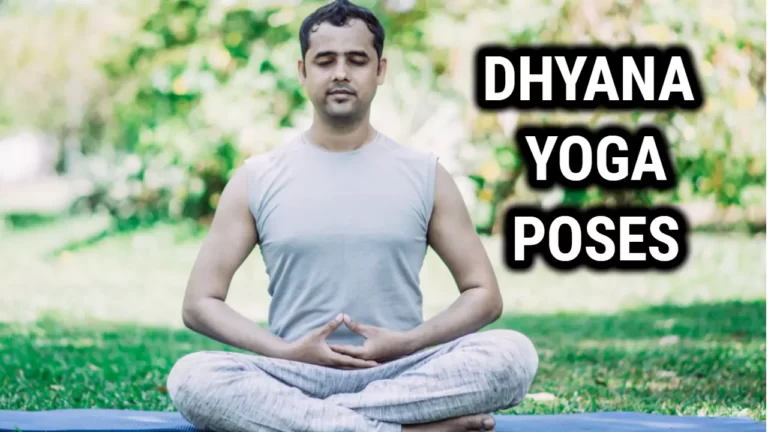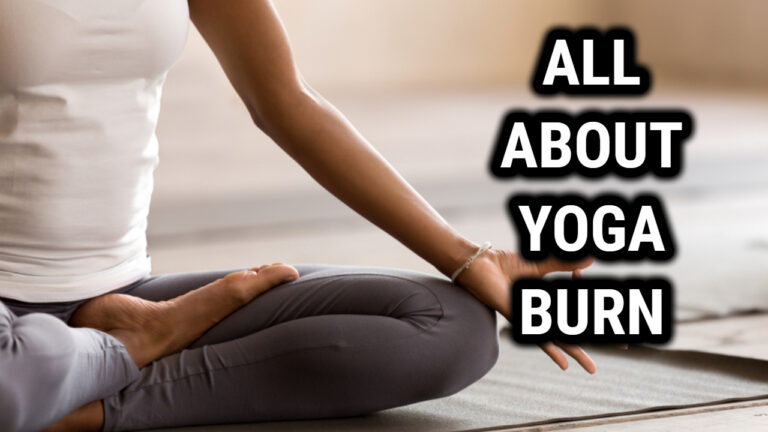Yoga Poses With Support for Beginners

Yoga is an ancient practice that has been used for centuries to improve physical, mental, and emotional health. One of the most important aspects of yoga is the use of proper alignment and support in each pose. Yoga poses with support can help students of all levels achieve proper alignment, prevent injury, and deepen their practice.
Props such as blocks, straps, blankets, and bolsters can provide the necessary support to help students achieve proper alignment in each pose. For example, using a block under the hand in Triangle Pose can help students with tight hamstrings or limited flexibility reach the ground without compromising their alignment. Similarly, using a bolster under the hips in Seated Forward Fold can help students with tight hips or lower back pain achieve a deeper stretch without straining their back.
Whether you’re a beginner or an experienced yogi, incorporating support into your practice can help you achieve your goals safely and effectively. In this article, we will explore some of the best yoga poses with support and how to use props to enhance your practice.
What are Yoga Poses with Support?
Yoga poses with support involve using props such as blankets, blocks, bolsters, and straps to create a more comfortable and relaxing experience. These props help to support the body and allow practitioners to hold poses for longer periods of time, which can help to deepen the stretch and provide a greater sense of relaxation.
Yoga poses with support are ideal for beginners or those with injuries, as they help to reduce the risk of strain or injury. They are also great for those who want to focus on their breath and meditation, as the support allows for a deeper sense of relaxation and surrender.
Some examples of yoga poses with support include:
- Supported Child’s Pose
- Supported Bridge Pose
- Supported Headstand
- Supported Fish Pose
- Supported Shoulderstand
Using props in yoga poses can also help to improve alignment and posture. For example, using a block in Triangle Pose can help to bring the ground closer to the practitioner, allowing them to maintain proper alignment and avoid strain in the lower back.
Yoga poses with support are a great way to deepen your practice and experience the many benefits of yoga in a safe and comfortable way. Whether you are a beginner or an experienced practitioner, incorporating props into your practice can help to enhance your experience and provide a greater sense of relaxation and surrender.
Benefits of Yoga Poses with Support
Physical Benefits
One of the main physical benefits of yoga poses with support is improved alignment. Using props can help practitioners find the proper alignment in each pose, which can reduce the risk of injury and strain on the body.
This is particularly important for beginners who may not yet have the strength or flexibility to hold certain poses without support. In addition, yoga poses with support can help to release tension and tightness in the body.
By using props to support the body, practitioners can relax into each pose and allow the muscles to release and let go of tension. This can lead to reduced pain and discomfort in the body, particularly in areas such as the neck, shoulders, and lower back.
Mental Benefits
The main mental benefits of yoga poses with support is reduced stress and anxiety. By using props to support the body, practitioners can relax into each pose and allow the mind to quiet down. This can help to reduce the levels of cortisol, the stress hormone, in the body, leading to a greater sense of calm and relaxation.
In addition, yoga poses with support can help to improve focus and concentration. By using props to support the body, practitioners can find greater comfort and ease in each pose, allowing them to focus more fully on their breath and the present moment. This can lead to improved mental clarity and focus, both on and off the mat.
Yoga poses with support can provide numerous physical and mental benefits for practitioners of all levels. By using props to support the body, practitioners can find greater comfort and ease in each pose, leading to improved alignment, reduced pain and discomfort, and a greater sense of calm and relaxation in the mind.
Types of Support for Yoga Poses
When practicing yoga, it is important to have the right support to help you achieve the best possible results. There are different types of support that can be used to enhance your yoga practice. In this section, we will discuss three types of support: props, walls, and chairs.
Props
Props such as blocks, straps, blankets, and bolsters can be used to provide support and stability in yoga poses. Blocks can be used to help with alignment and to bring the floor closer to you. Straps can be used to help you reach your toes or to deepen a stretch. Blankets and bolsters can provide cushioning and support for poses such as backbends and restorative poses.
Using props can help you achieve proper alignment, prevent injury, and allow you to hold poses for longer periods of time. They can also make poses more accessible for those who are less flexible or have physical limitations.
Walls
Walls can be used to provide support and stability in standing poses, inversions, and backbends. They can help you find proper alignment and prevent you from overextending or falling out of a pose. For example, in a handstand, you can use the wall to help you find balance and stability. In a backbend, you can use the wall to help you keep your shoulders and hips in alignment.
Using a wall can also be helpful for those who are new to yoga or have limited mobility. It can give them a sense of security and help them build confidence in their practice.
Chairs
Chairs can be used to provide support and stability in seated and standing poses. They can be used to help you maintain proper alignment and prevent you from overextending or falling out of a pose. For example, in a forward bend, you can use a chair to support your torso and help you maintain a straight spine. In a standing pose, you can use a chair to help you find balance and stability.
Using a chair can also be helpful for those who have limited mobility or are recovering from an injury. It can allow them to participate in yoga poses that they may not be able to do otherwise.
10 Yoga Poses with Support
Yoga is a great way to increase flexibility, strength, and balance. However, some poses can be challenging, especially for beginners. That’s where support comes in. Using props such as walls, blocks, and straps can help you get into the correct alignment and hold the pose for longer. Here are ten yoga poses with support that are perfect for beginners.
1. Mountain Pose with Wall Support: Stand with your back against a wall and your feet hip-width apart. Press your shoulders and hips against the wall and engage your core. This pose helps with posture and balance.
2. Downward-Facing Dog with Wall Support: Place your hands on a wall at shoulder height and walk your feet back until your body forms an inverted V-shape. This pose helps stretch the hamstrings and calves while strengthening the arms and shoulders.
3. Chair Pose with Wall Support: Stand with your back against a wall and your feet hip-width apart. Bend your knees and lower your hips as if you are sitting in an imaginary chair. Press your shoulders and hips against the wall and engage your core. This pose strengthens the legs and core.
4. Half Moon Pose with Block Support: Place a block on the floor in front of you and stand with your feet hip-width apart. Lift one leg and place your foot on the block. Reach your other hand towards the ceiling and gaze up. This pose improves balance and strengthens the legs.
5. Triangle Pose with Block Support: Stand with your feet wide apart and place a block on the floor next to your front foot. Reach your front hand towards the block and lower your other hand towards your ankle. This pose stretches the hamstrings and hips while strengthening the legs.
6. Pigeon Pose with Wall Support: Sit with your back against a wall and your legs extended in front of you. Bend one knee and place your foot on the wall. Bring your other leg into a pigeon pose with your foot flexed. This pose stretches the hips and glutes.
7. Supported Bridge Pose with Block: Lie on your back with a block under your sacrum. Bend your knees and place your feet hip-width apart. Lift your hips towards the ceiling and interlace your hands under your back. This pose opens the chest and stretches the spine.
8. Supported Child’s Pose with Bolster: Kneel on the floor and place a bolster in front of you. Lower your chest onto the bolster and rest your head on your hands. This pose stretches the hips and lower back while promoting relaxation.
9. Seated Forward Fold with Strap Support: Sit on the floor with your legs extended in front of you. Loop a strap around the balls of your feet and hold onto the ends. Hinge forward from the hips and reach towards your feet. This pose stretches the hamstrings and lower back.
10. Reclined Bound Angle Pose with Bolster: Lie on your back with a bolster under your knees. Bring the soles of your feet together and let your knees fall open to the sides. This pose stretches the hips and inner thighs while promoting relaxation.
Precautions for Practicing Yoga Poses with Support
Yoga poses with support can be beneficial for those who require extra assistance due to injury, illness, or limited mobility. However, it is important to take precautions when practicing these poses to avoid further injury or discomfort. Here are some important things to keep in mind:
- Always consult with a healthcare professional before starting a yoga practice, especially if you have any medical conditions or injuries.
- Use props such as blocks, bolsters, straps, and blankets as needed to support your body and help you maintain proper alignment.
- Do not push yourself beyond your limits. Listen to your body and only go as far as feels comfortable and safe.
- Avoid poses that cause pain or discomfort, or that are contraindicated for your specific condition.
- Practice under the guidance of a qualified yoga teacher who can provide modifications and adjustments as needed.
Additionally, it is important to be aware of any potential risks associated with specific poses. For example, inversions such as headstand and shoulder stand should be avoided by those with neck injuries or high blood pressure. Supported bridge pose can be helpful for those with back pain, but should be avoided by those with recent spinal injuries or herniated discs.
Overall, practicing yoga poses with support can be a safe and effective way to improve flexibility, strength, and balance. However, it is important to take precautions and work within your own limitations to avoid injury and discomfort.
Finally
Yoga poses with support can be a great way to deepen your practice and help you achieve greater flexibility, strength, and balance. Whether you are recovering from an injury, dealing with chronic pain, or just looking to improve your overall well-being, there are many different types of props and modifications that can be used to make your yoga practice more accessible and enjoyable.
Overall, yoga poses with support can be a wonderful way to explore your body’s potential and discover new levels of strength, flexibility, and relaxation. Whether you choose to use props or not, the most important thing is to approach your practice with an open mind and a willingness to learn and grow.





